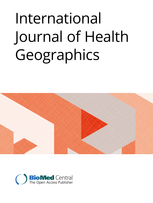News
Do different conceptualizations of urbanity matter when we investigate urban-rural inequalities in suicide mortality?
 Yes, it does, as our recent paper shows.
Yes, it does, as our recent paper shows.
Urban–rural disparities in suicide mortality have received considerable attention. Varying conceptualizations of urbanity may contribute to the conflicting findings. This ecological study on Germany assessed how and to what extent urban–rural suicide associations are affected by 14 different urban–rural indicators. Indicators were based on continuous or k-means classified population data, land-use data, planning typologies, or represented population-based accessibility indicators. Agreements between indicators were tested with correlation analyses. Spatial Bayesian Poisson regressions were estimated to examine urban–rural suicide associations while adjusting for risk and protective factors. Urban–rural differences in suicide rates per 100,000 persons were found irrespective of the indicator. Strong and significant correlation was observed between different urban–rural indicators. Although the effect sign consistently referred to a reduced risk in urban areas, statistical significance was not universally confirmed by all regressions. Goodness-of-fit statistics suggested that the population potential score performs best, and that population density is the second best indicator of urbanicity. Numerical indicators are favored over classified ones. Regional planning typologies are not supported. The strength of suicide urban–rural associations varies with respect to the applied indicator of urbanicity. Future studies that put urban–rural inequalities central are recommended to apply either unclassified population potentials or population density indicators, but sensitivity analyses are advised.

